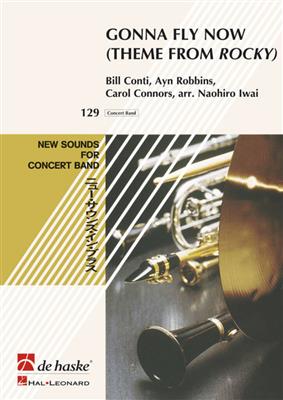Results
-
£72.95
Goin' Home for Christmas
Taking the famous Largo from Dvoraks New World Symphony and combining it with holiday favorites, Larry Clark has created a new piece that will live in our Christmas memories. This arrangement will feature the musicianship of your students. This is simple effective and nicely done.
Estimated dispatch 7-14 working days
-
 £84.50
£84.50Star Wars Heroes - John Williams
Celebrate the heroes with some of the most beloved music from Star Wars! This stunning medley arranged by Jerry Brubaker includes popular selections from many of the films. It features the ever recognizable and exciting Star Wars (Main Title), the lush and beautiful Luke and Leia, the action packed Battle of the Heroes, the emotional and lyrical Han Solo and the Princess, and to provide a fitting conclusion, the majestic The Throne Room. This is truly John Williams at his best! May the Force be with you! (5:30)
Estimated dispatch 7-14 working days
-
 £53.95
£53.95Pennsylvania 6-5000 - Jerry Gray
With all the charisma of the original, this is a treat for your beginners...Of course you'll have to explain the Pennsylvania exchange concept from the pre-touchtone days. The chart offers lots of opportunity to be creative with the ringing sounds - bring it up to date by using a cell phone ring! Take a journey through musical - and communication - history with this energetic tune. (1:42)
Estimated dispatch 7-14 working days
-
 £104.99
£104.99Facedown - Sven Van Calster
This is an ideal work to bring your Euphonium or Baritone soloist into the limelight. All aspects of the instrument are featured, with virtuoso, rhythmic passages as well as attractive, cantabile melodies. The straightforward accompaniment makes it possible to play this composition with practically every band as the parts have been provided with sufficient doublings.
Estimated dispatch 7-14 working days
-
 £76.99
£76.99Gonna Fly Now - Bill Conti
This is best known as the theme from Rocky, the 1997 smash hit for composer, conductor and Oscar winner Bill Conti. The Italian composer Lorenzo Bocci has taken this exciting piece and made it accessible for concert bands.
Estimated dispatch 7-14 working days
-
 £134.99
£134.99Paris Montmartre
This is a beautiful medley of famous French chansons arranged for concert band by Toshio Mashima. It contains the following titles: Sous le Ciel de Paris, Moulin Rouge, La Vie en Rose, Les Feuilles Mortes (also known as Autumn Leaves) and C'est si Bon. Add a bit of French sophistication to any concert with this great new publication.
Estimated dispatch 7-14 working days
-
 £104.99
£104.99Gonna Fly Now (Theme From Rocky) - Bill Conti
This is best known as the theme from Rocky, the 1997 smash hitfor composer, conductor and Oscar winner Bill Conti. The Japanesearranger Naohiro Iwai has taken this exciting piece and made it intoa stirring concert item for concert band.
Estimated dispatch 7-14 working days
-
 £79.99
£79.99Who's That Masked Man?
Why is it that so many of our favorite characters from film and television wear masks? Jay Bocook examines this disturbing phenomenon in this intense yet entertaining medley featuring themes from The Phantom of the Opera, The Maskof Zorro, The Lone Ranger, Spider Man and The Incredibles.
Estimated dispatch 7-14 working days
-
 £57.50
£57.50The Saints' Hallelujah (Young Edition)
One of the all-time favorite production numbers for the Canadian Brass is this clever arrangement that combines The Hallelujah Chorus with When the Saints Go Marching In. Johnnie has created an easier version of this classicallowing it to be performed by younger groups. What a great idea! (Grade 21/2)
Estimated dispatch 7-14 working days
-
 £53.50
£53.50Green Onions
Booker T. & the MG's recorded this iconic instrumental hit in the early '60s, and it continues to be popular in film and TV decades later. Instantly recognizable, this is sure to be a hit with all audiences.
Estimated dispatch 7-14 working days
